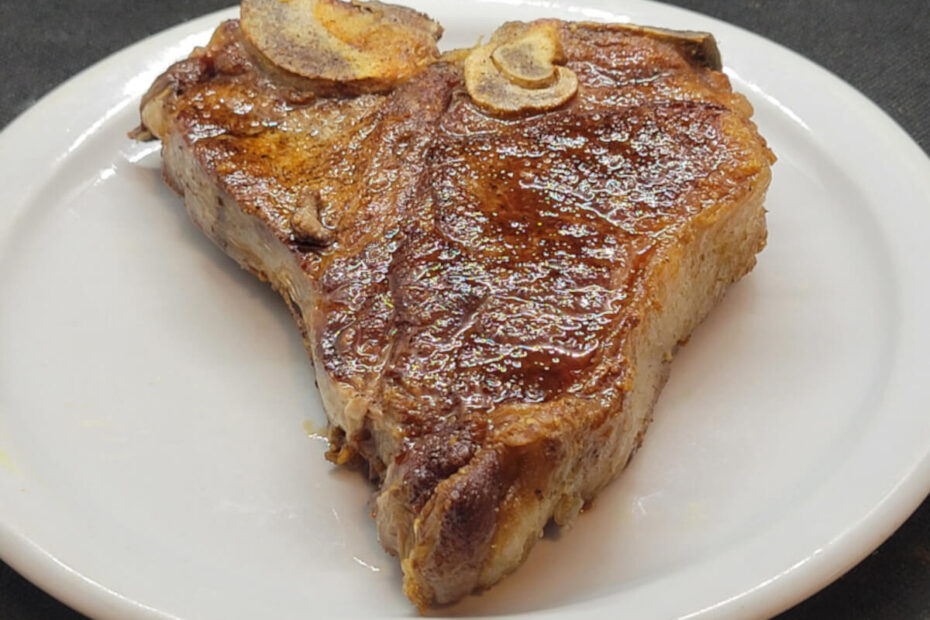Beautifully tender Veal T-Bone Steak seasoned with Salt & Pepper, seared in Beef Fat for extra flavor until done or finished in the oven.
Known for its mild, delicate taste and buttery texture, a Veal T-Bone Steak makes a sophisticated twist on traditional steak. Since Veal is not as beefy as regular beef steaks, the searing fat of choice is beef fat. The Veal Steaks pair with simple seasonings and a fresh Green or Red Chimichurri or Herbs & Butter, this dish lets the natural flavors of veal shine, perfect for an elegant dinner or special occasion meal.
What are T-Bone Steaks
T-bones are a combination of two cuts, the strip steak & the tenderloin. When the tenderloin section is wide enough (1.5 inches or more), the steak is called a Porterhouse (smaller than this, is your T-bone). T-bones are known for their balance of tenderness and flavor, making them an ideal choice for a juicy, satisfying steak. Enjoy the crispy crust and the tender juicy meat in every bite, it is unbelievably tender.
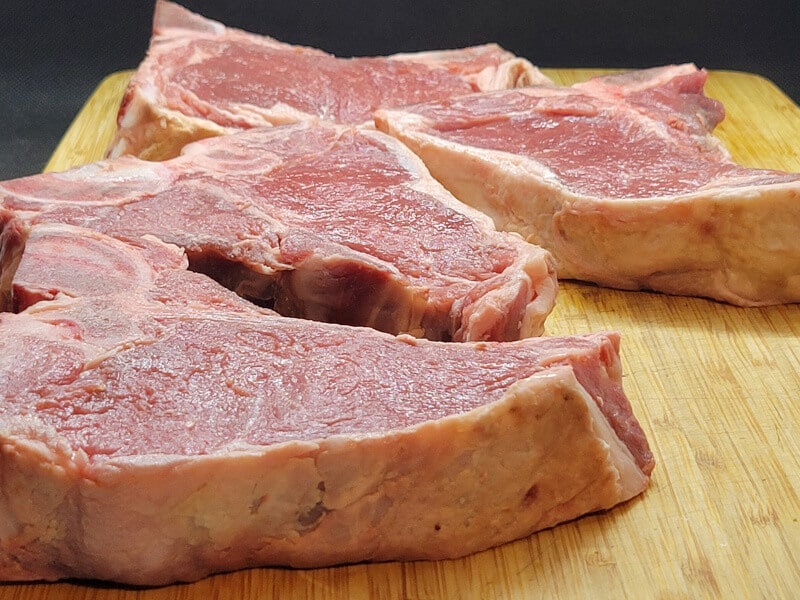
Veal T-Bone Steak Flavor Profile
Veal T-bone steaks have a mild, delicate flavor profile that’s more subtle compared to beef. The taste is light and slightly sweet, with a smooth, melt in your mouth texture when cooked properly. It gives a tender bite with little marbling, so it lacks the beefy flavors of a traditional steak. But compensates with a gentle, elegant taste that absorbs seasonings well.
This mildness pairs especially well with herbs like thyme, rosemary, or parsley, as well as gentle spices and light sauces. For extra richness, Veal T-Bones are often finished with a buttery baste or served with a bright Chimichurri or a squeeze of fresh lemon for contrast.
Veal T-Bone Steak Thickness
Veal T-bone steaks are best when they’re thick, around 1 to 1 1/2 inches. They’re usually light pink in color with a mild taste. You’ll get the best results by using simple seasoning and pairing with a flavorful sauce, like Chimichurri.
Veal T-Bone Steak Ingredients
- Veal T-Bone Steaks: Veal T-Bone steaks at about 1 inch or slightly thicker
- Beef Fat: For searing, in the form of Rendered Beef Fat, Beef Suet or Tallow
- Salt & Pepper: for seasoning well in advance
- Optionally finish in Butter with/without Garlic and various Herbs such as Rosemary and Thyme or rest with Chimuchurri drizzled over the steaks
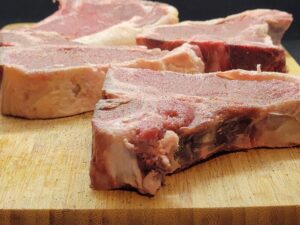

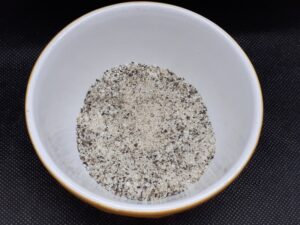
Seasoning Veal T-Bone Steak
Veal T-bone Steaks don’t need marinating like tougher cuts do, because they’re already tender. A simple mix of Salt & Pepper is enough to bring out their natural flavors.
Season the T-Bone steaks well in advance to allow the salt to work and dry out the surface for a better sear. This is perfect because we also need the steaks to come to room temp before cooking. Season the steaks and leave them rest on the counter for at least 30 minutes or longer until they are at room temp. You can even season them the night before and refrigerate. Just take them out at least 30 minutes or longer to come to room temp before cooking.
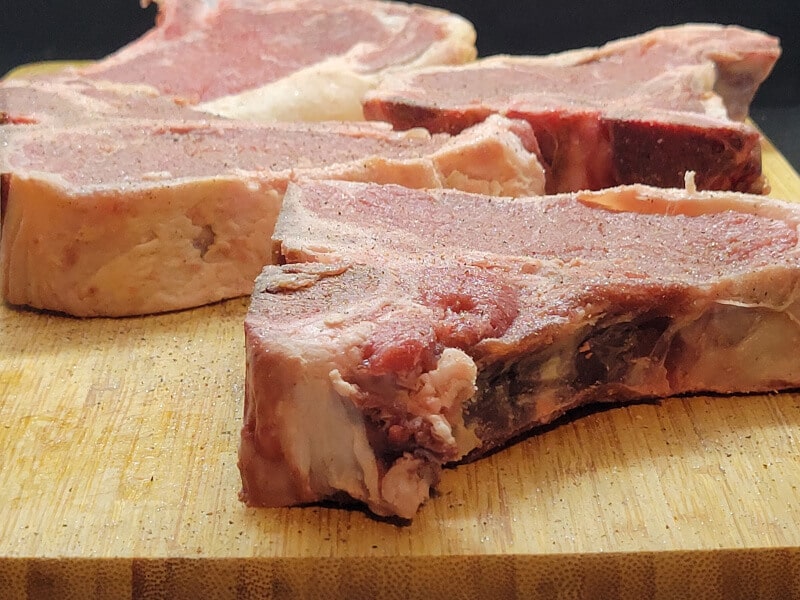
Salt & Pepper Blend
Combine the below Salt & Pepper blend ingredients together and use to season the Steaks. The thicker the Steaks, the more seasoning.

Salt & Pepper Blend
- 1 Tbl Sea Salt
- 1 tsp Black Pepper
- 1/2 tsp White Pepper
Searing Fat
The best fat for searing, is the same fat as the meat you are searing. In the case of Veal T-Bone steaks, this can be Beef Suet, Tallow or the rendered fat from trimming away excess fat from the T-bone steaks, then rendering that out. Topping up with Beef Suet, Tallow, Ghee or neutral oil as needed to ensure you have enough fat to coat the entire bottom of the pan.
The additional benefit of Beef Suet or Tallow with Veal, is because Veal tends to have a much less beefy flavor. The addition of Beef Fat ups that beefy flavor. Although Ghee could also be used to create a more buttery taste.
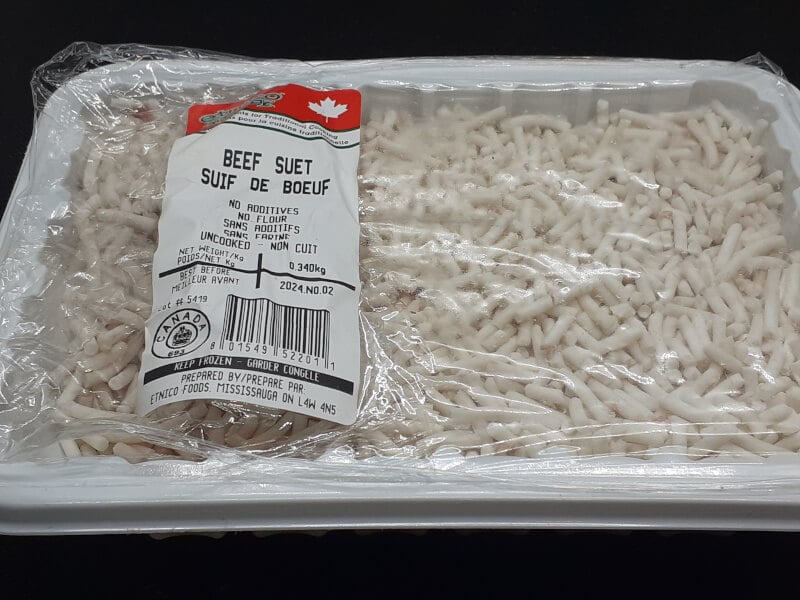
Searing Veal T-Bone Steaks
Heat a skillet up over medium to medium high heat and let it get hot. Then add fat and wait just a few seconds until it starts to smoke, before laying in your steak to sear. Sear T-Bone Steaks for about 3–5 minutes per side, or longer in the case of well done. Always use a thermometer for better accuracy.
Since Veal is lean, be careful not to over cook. It’s best enjoyed when it’s medium rare to medium, as this preserves its tenderness and mild flavor.
Sear Time: With room temp Veal T-Bone Steaks at about 1 inch, seasoned with Salt & Pepper. Then seared for 4 minutes per side, will yield an internal temp of 115 F to 120 F (rare), when tested with a thermometer. Times will vary based on heat, starting steak temp and cooking medium (type of skillet or pan). But generally these temps are hit, at about 4 minutes per side, give or take. You can sear longer for medium rare to medium, or finish in the oven, more ideal for medium — well done.
Finishing Steak in the oven
While you can just sear until the desired internal temperature is achieved, especially with Veal. You can also finish the steak in the oven or only sear for about 3 minutes per side over medium high heat and finish in the oven.
Preheat your oven to 350F – 400F. Cook for anywhere between 3–8 minutes or until the internal temperature reaches 130F for medium-rare, or adjust the time based on desired doneness. Generally, 3-8 minutes in the oven at these temperatures is enough, depending on the steak’s thickness and desired doneness. Always use a thermometer for accuracy.
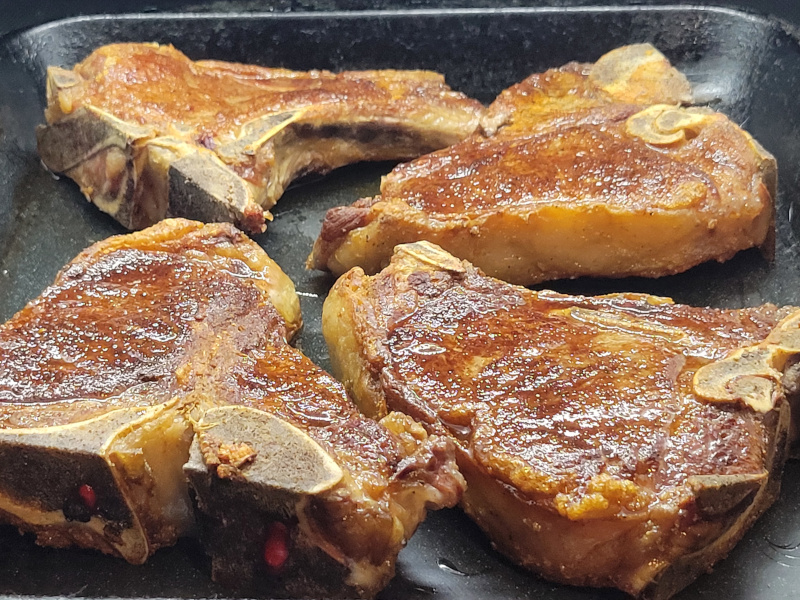
Benefits of finishing steak in the oven
The technique of finishing steaks in the oven is to achieve even doneness, avoiding burnt flavors, and enhancing moisture retention. This approach is widely used in professional kitchens. Because it helps create a perfectly cooked steak with a well-developed crust and juicy interior.
Finishing steaks in the oven after searing offers a few key benefits:
- Even Cooking: The oven provides a consistent, indirect heat that prevents overcooking the outside. While bringing the internal temperature to the desired level.
- Controlled Temperature: By transferring the steak to a lower temperature environment after searing, you can better achieve your target doneness. It allows for gentler cooking, giving you more control, especially for thicker cuts.
- Juiciness: Finishing in the oven helps retain moisture. The oven’s gentler heat allows the interior to cook slowly, preserving more juices.
- Reduced Risk of Burning Butter or Aromatics: If you’re using butter, herbs, or aromatics, finishing in the oven avoids burning them on high heat. These ingredients can be added when the steak goes in the oven, infusing flavor without scorching.
This technique is especially helpful with thicker cuts like veal T-bones, where a sear alone might not fully cook the center.
Reverse Sear Steaks
Just the opposite of finishing in the oven is the Reverse Seared Steak. The benefit of this technique is that the oven temp is much lower, usually around 250 F – 325 F. Which softens the fat making it more readily available when searing, and promotes an even cook and a beautiful sear when the steak hits the pan.
The steaks are removed when the internal temp is about 10-15 degrees away from the desired temp. Then seared straight from the oven to the pan for about 3-5 minutes or until the desired internal temp is reached. A crust is formed epsecially well with a reverse seared steak. Since the fat has already been softened in the oven before hitting the hot pan.
Steak Internal Temperatures
The internal temperatures are listed as below. As a way to commit them to memory, I remember that rare steaks are in the 20 range. Then just start counting up, medium rare in the 30 range, medium in the 40 range and 50 in the medium well. The lower temp is when they should be removed from the heat source. The higher temp is the final temp after resting.
- Rare – 120 F – 125 F
- Medium Rare 130 F – 135 F
- Medium – 140 F – 145 F
- Medium Well 150 F – 155 F.
- Well Done – 160 F and above
How to measure steak internal temp
Stand the Thermometer probe up next to the steak. Place your finger on the thermometer probe, wherever the top of the steak is. Keep your finger there marking the thickness of the steak. Insert the thermometer into the thickest part of the meat. Away from any bones or pockets of fat. At a 45 degree angle until it reaches where you finger was placed on the thermometer. This angle allows the probe to reach the center of the meat. Which is where the temperature is most critical for determining doneness.
Resting the Steak
Once you’ve finished cooking, let the steak rest for 5-10 minutes before slicing it. Resting allows the juices to settle and get reabsorbed, keeping it tender and juicy when you cut into it. Additional seasoning can go on or the pan butter drizzled over top.
Veal T-Bone with Chimichurri
This recipe for Veal T-bone Steaks was served with Red Chimichurri. Whenever using Chimichurri, take the Chimichurri out to come to room temp or make it fresh at the start and leave on the counter. Ladle it on the steaks as soon as they come off the heat to rest. This way the steak can absorb some Chimichurri as well.
The Steaks can be enjoyed just like this or with Sunny Side Up Eggs on top for Steak & Eggs or a Veal T-Bone with Chimichurri and Eggs.
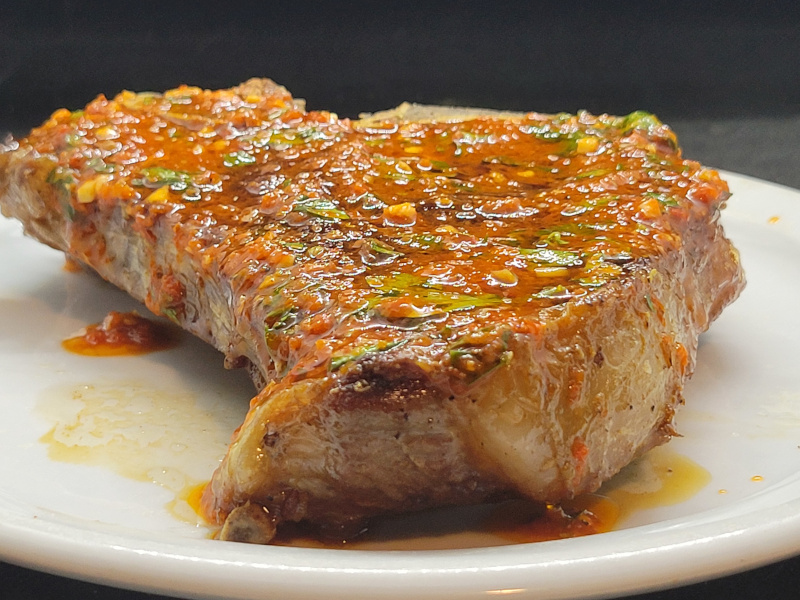
Veal T-Bone with Chimichurri and Duck Eggs
This recipe was also used to make Steak & Eggs. But using Duck Eggs instead, for a Veal T-Bone with Chimichurri and Duck Eggs dish. Just Amazing!
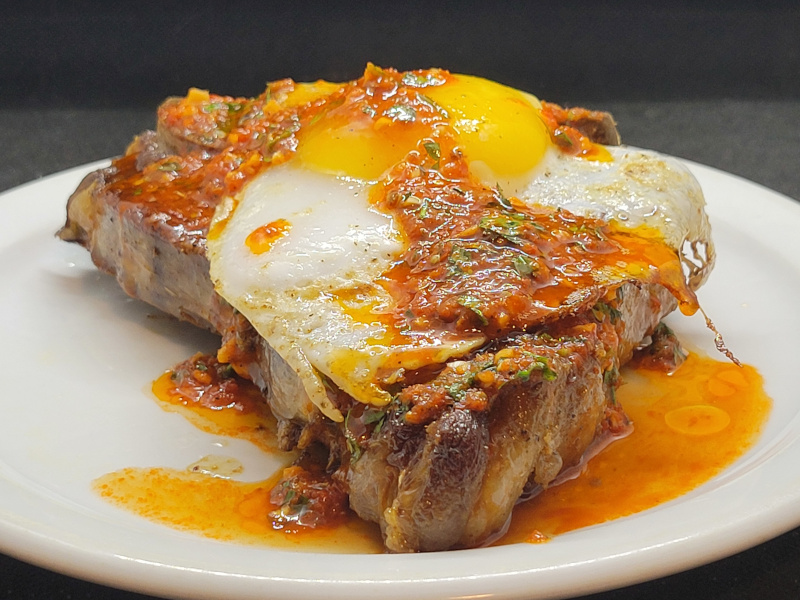
Equipment
- 1 Skillet
- 1 Pan if finishing in the oven
Ingredients
- 4×1 inch Veal T-Bone Steaks - approx 1 inch thick
- As Needed Beef Fat - enough to coat the bottom of the pan, can use rendered beef fat, beef suet, tallow, ghee or neutral oil
Salt & Pepper Blend
- 1 Tbl Sea Salt
- 1 tsp Black Pepper
- 1/2 tsp White Pepper
Instructions
- Combine the Salt & Pepper blend together to season the Steaks and leave out on the counter at least 30 minutes or longer to come to room temp before cooking. Preheat the oven to 350F-400F if you plan on finishing in the oven.
- Heat a heavy bottom skillet over medium to medium high heat until very hot. Add the Fat and wait a few seconds, just until it starts to smoke.
- Place the steaks in with space between them and leave for 3–5 minutes. Flip over and leave another 3–5 minutes. Check the internal temp and sear longer if needed, or finish the steaks in the oven. If it starts to smoke, remove the pan from the heat source to cool slightly, before placing it back on or lower your heat, especially if searing at med high to stay just below that smoking point. You want the fat hot, but not burnt, which will ruin the taste of the steaks.
- Once the Steaks have reached the desired internal temperature, remove and let the steaks rest for 5–10 minutes before serving. If using Chimichurri, or Pan Butter, drizzle these on the steaks while they rest.
